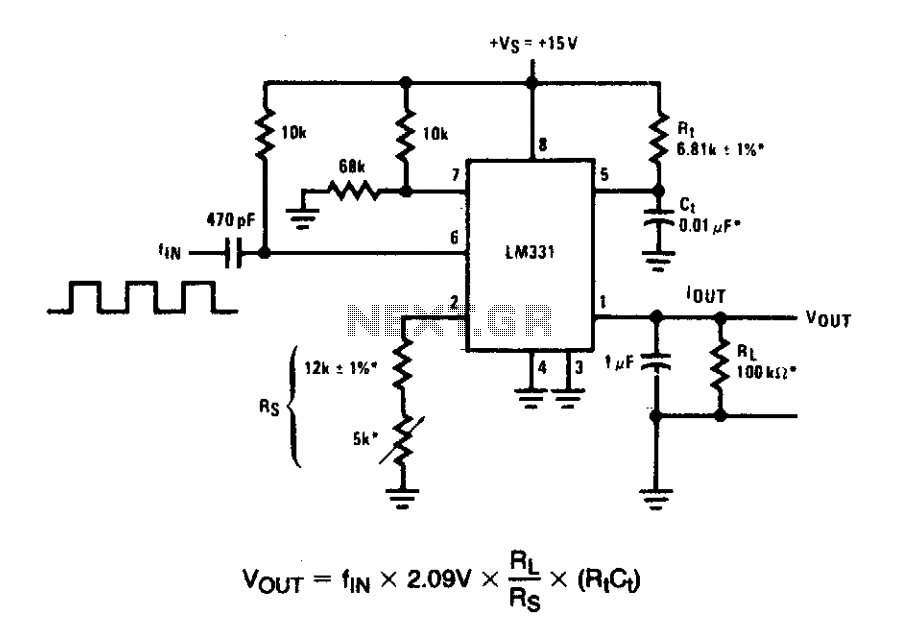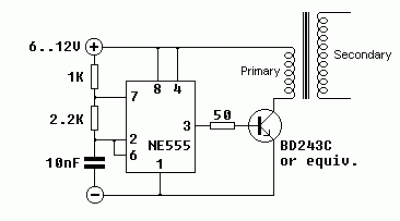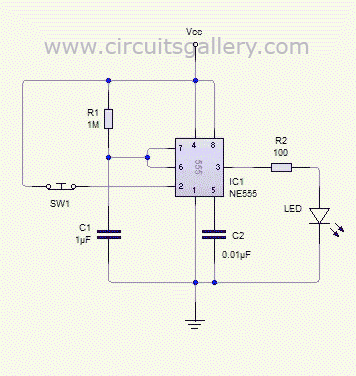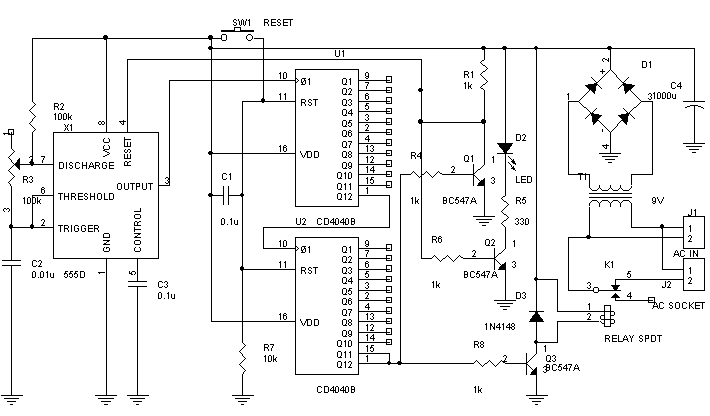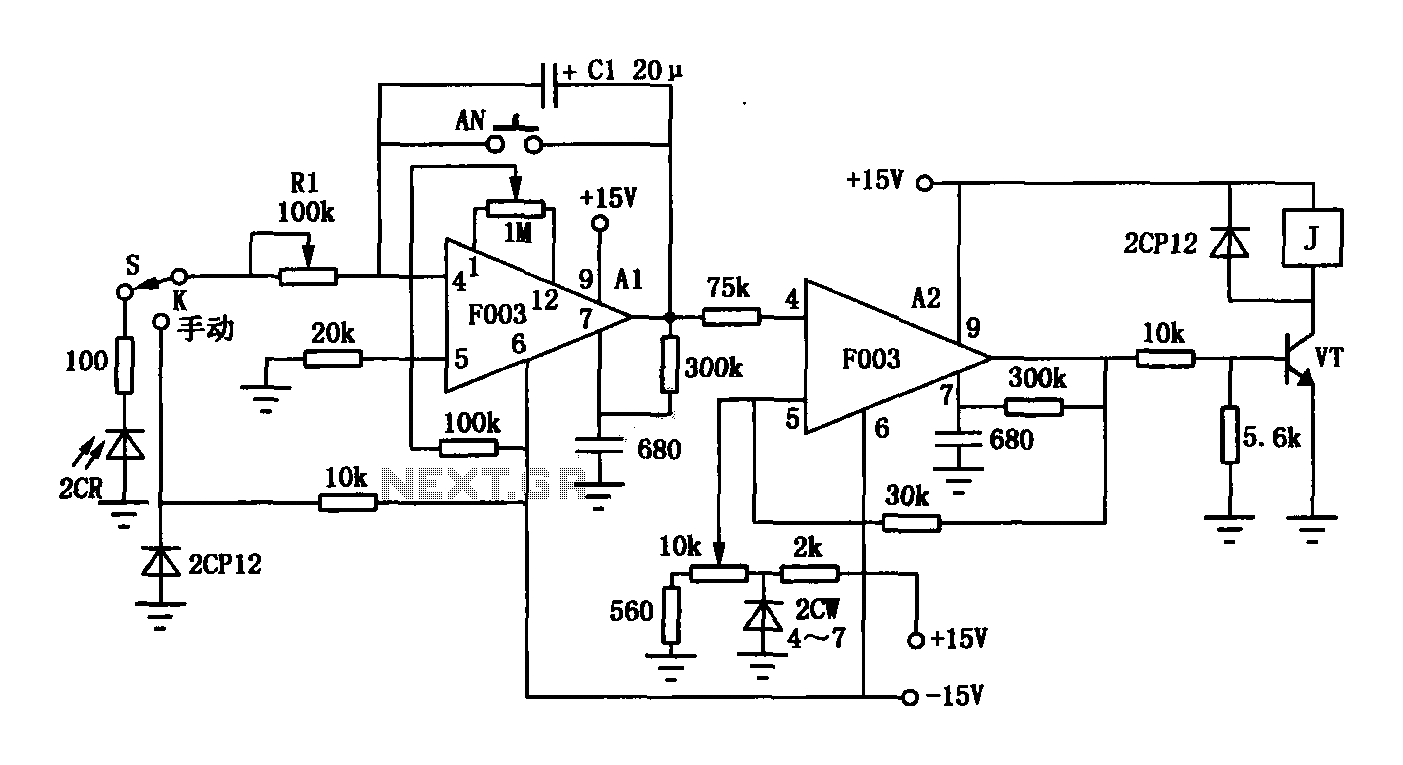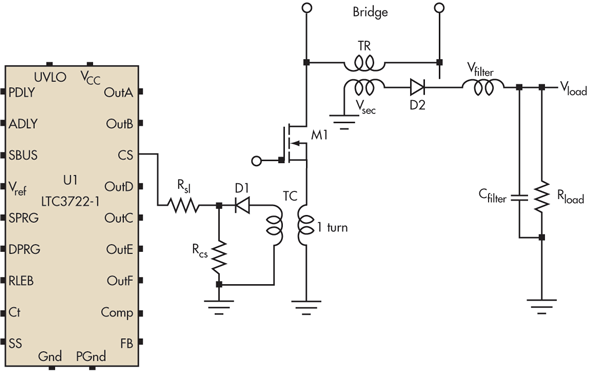
555 Timer Frequency and Duty Cycle Calculator
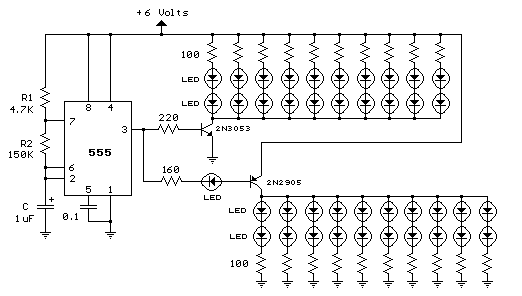
The SE555/NE555 timer was first introduced by Signetics Corporation around 1971. The pin connections and their functions are as follows: Pin 1 (Ground) is the most-negative supply potential and is typically connected to circuit common when powered by positive supply voltages. Pin 2 (Trigger) is the input that initiates the output to go high and start the timing cycle. Triggering occurs when the voltage on this pin drops from above 2/3 of the supply voltage to below 1/3. For instance, with a 12-volt supply, the trigger voltage needs to be above 8 volts and then drop below 4 volts to commence the timing cycle. This action is level sensitive, and the trigger voltage can change slowly. To prevent retriggering, the trigger voltage must rise above 1/3 of the supply before the timing cycle ends in monostable mode. The trigger input current is approximately 0.5 microamps. Pin 3 (Output) transitions to a high level of 1.7 volts below the supply voltage when the timing cycle starts and returns to a low level near 0 at the end. The maximum output current is about 200 mA at either state. Pin 4 (Reset) resets the timer to a low state when a low logic level is applied and is generally connected to the positive supply line if unused. Pin 5 (Control) allows external voltage to modify the triggering and threshold voltages. In astable or oscillating mode, this pin can be used for frequency modulation. If unused, a small capacitor should be connected from pin 5 to ground to prevent false triggering due to noise. Pin 6 (Threshold) resets the latch and causes the output to go low when the voltage rises above 2/3 of the supply from below 1/3. This action is also level sensitive. Pin 7 (Discharge) is an open collector output that is in phase with the output on pin 3 and has similar current sinking capabilities. Pin 8 (V+) is the positive supply voltage terminal for the 555 timer IC, with an operating range of +4.5 volts to +16 volts. The pin connections for the 556, a dual 555 timer, are also provided. For instance, the outputs for the two timers of the 556 are on pins 5 and 9, corresponding to output pin 3 of the 555. The schematic illustrates two basic circuits for the 555 timer. One example is a LED flasher powered by a 9-volt battery, where the LED turns on during time T1 and off during T2. Another example shows a flashing bicycle light powered by three C or D cells (4.5 volts), with two flashlight lamps flashing alternately at approximately a 1.5-second cycle rate. Using a 4.7K resistor for R1, a 100K resistor for R2, and a 4.7uF capacitor results in time intervals of 341 milliseconds for the upper lamp and 326 milliseconds for the lower lamp. Transistors are used to drive the lamps, providing additional current beyond the 200 mA limit of the 555 timer. A 2N2905 PNP and a 2N3053 NPN could be employed for lamps requiring 500 mA or less, while a TIP29 NPN and TIP30 PNP can be used for up to 1 amp. A PR3 is a 4.5-volt, 500 mA flashlight bulb. Two diodes are connected in series with the PNP transistor base to ensure the lower lamp turns off when the 555 output is high during the T1 time interval.
The SE555/NE555 timer is a highly versatile integrated circuit widely used in various timing applications, including pulse generation, oscillation, and timers. It operates in two primary modes: monostable and astable. In monostable mode, the timer produces a single output pulse of a specified duration in response to a trigger signal. The duration of the pulse is determined by external resistors and capacitors connected to the timer.
In astable mode, the 555 timer continuously oscillates between high and low states, generating a square wave output. The frequency and duty cycle of the oscillation can be easily adjusted by varying the resistor and capacitor values. This makes the 555 timer ideal for applications such as LED flashers, tone generators, and clock pulses.
The internal architecture of the 555 timer includes two voltage comparators, a flip-flop, a discharge transistor, and a resistor divider network. The voltage comparators compare the input voltage at the trigger and threshold pins with reference voltages derived from the supply voltage. The flip-flop controls the output state based on the comparison results, and the discharge transistor is used to reset the timing capacitor when the output goes low.
For practical applications, the 555 timer can be interfaced with various components, including transistors for driving higher loads, diodes for protecting against back EMF, and capacitors for timing adjustments. The flexibility of the 555 timer allows it to be used in a wide range of electronic projects, from simple LED blinkers to complex timing circuits in industrial applications. The ability to operate over a broad supply voltage range enhances its usability in different environments and applications.First introduced by the Signetics Corporation as the SE555/NE555 about 1971. Pin connections and functions: (See schematic below for basic circuits) Pin 1 (Ground) - The ground (or common) pin is the most-negative supply potential of the device, which is normally connected to circuit common when operated from positive supply voltages. Pin 2 (Trigg er) - This pin is the input which causes the output to go high and begin the timing cycle. Triggering occurs when the trigger input moves from a voltage above 2/3 of the supply voltage to a voltage below 1/3 of the supply. For example using a 12 volt supply, the trigger input voltage must start from above 8 volts and move down to a voltage below 4 volts to begin the timing cycle.
The action is level sensitive and the trigger voltage may move very slowly. To avoid retriggering, the trigger voltage must return to a voltage above 1/3 of the supply before the end of the timing cycle in the monostable mode. Trigger input current is about 0. 5 microamps. Pin 3 (Output) - The output pin of the 555 moves to a high level of 1. 7 volts less than the supply voltage when the timing cycle begins. The output returns to a low level near 0 at the end of the cycle. Maximum current from the output at either low or high levels is approximately 200 mA. Pin 4 (Reset): - A low logic level on this pin resets the timer and returns the ouput to a low state.
It is normally connected to the + supply line if not used. Pin 5 (Control) - This pin allows changing the triggering and threshold voltages by applying an external voltage. When the timer is operating in the astable or oscillating mode, this input could be used to alter or frequency modulate the output.
If not in use, it is recommended installing a small capacitor from pin 5 to ground to avoid possible false or erratic triggering from noise effects. Pin 6 (Threshold) - Pin 6 is used to reset the latch and cause the output to go low. Reset occurs when the voltage on this pin moves from a voltage below 1/3 of the supply to a voltage above 2/3 of the supply.
The action is level sensitive and can move slowly similar to the trigger voltage. Pin 7 (Discharge) - This pin is an open collector output which is in phase with the main output on pin 3 and has similar current sinking capability. Pin 8 (V +) - This is the positive supply voltage terminal of the 555 timer IC. Supply-voltage operating range is +4. 5 volts (minimum) to +16 volts (maximum). The pin connections for the 556 which is a dual 555 timer (2 in one package) are shown in table below.
For example, the two outputs for the two timers of the 556 are on pins 5 and 9 which correspond to the output pin 3 of the 555. 555 556 timer #1 timer #2 - Ground 1 7 7 Trigger 2 6 8 Output 3 5 9 Reset 4 4 10 Control 5 3 11 Threshold 6 2 12 Discharge 7 1 13 + Power Vcc 8 14 14 - The schematics below show the two basic circuits for the 555 timer.
Below is a pictorial view of the 555 timer wired as a LED flasher and powered with a 9 volt battery. The LED will turn on during time T1 and off during time T2. The 555 circuit below is a flashing bicycle light powered with three C or D cells (4. 5 volts). The two flashlight lamps will alternately flash at a approximate 1. 5 second cycle rate. Using a 4. 7K resistor for R1 and a 100K resistor for R2 and a 4. 7uF capacitor, the time intervals for the two lamps are 341 milliseconds (T1, upper lamp) and 326 milliseconds (T2 lower lamp). The lamps are driven by transistors to provide additional current beyond the 200 mA limit of the 555 timer.
A 2N2905 PNP and a 2N3053 NPN could be used for lamps requiring 500 mA or less. For additional current, a TIP29 NPN and TIP30 PNP could be used up to 1 amp. A PR3 is a 4. 5 volt, 500 mA flashlight bulb. Two diodes are placed in series with the PNP transistor base so that the lower lamp turns off when the 555 output goes high during the T1 time interval. The high output level of the 🔗 External reference
The SE555/NE555 timer is a highly versatile integrated circuit widely used in various timing applications, including pulse generation, oscillation, and timers. It operates in two primary modes: monostable and astable. In monostable mode, the timer produces a single output pulse of a specified duration in response to a trigger signal. The duration of the pulse is determined by external resistors and capacitors connected to the timer.
In astable mode, the 555 timer continuously oscillates between high and low states, generating a square wave output. The frequency and duty cycle of the oscillation can be easily adjusted by varying the resistor and capacitor values. This makes the 555 timer ideal for applications such as LED flashers, tone generators, and clock pulses.
The internal architecture of the 555 timer includes two voltage comparators, a flip-flop, a discharge transistor, and a resistor divider network. The voltage comparators compare the input voltage at the trigger and threshold pins with reference voltages derived from the supply voltage. The flip-flop controls the output state based on the comparison results, and the discharge transistor is used to reset the timing capacitor when the output goes low.
For practical applications, the 555 timer can be interfaced with various components, including transistors for driving higher loads, diodes for protecting against back EMF, and capacitors for timing adjustments. The flexibility of the 555 timer allows it to be used in a wide range of electronic projects, from simple LED blinkers to complex timing circuits in industrial applications. The ability to operate over a broad supply voltage range enhances its usability in different environments and applications.First introduced by the Signetics Corporation as the SE555/NE555 about 1971. Pin connections and functions: (See schematic below for basic circuits) Pin 1 (Ground) - The ground (or common) pin is the most-negative supply potential of the device, which is normally connected to circuit common when operated from positive supply voltages. Pin 2 (Trigg er) - This pin is the input which causes the output to go high and begin the timing cycle. Triggering occurs when the trigger input moves from a voltage above 2/3 of the supply voltage to a voltage below 1/3 of the supply. For example using a 12 volt supply, the trigger input voltage must start from above 8 volts and move down to a voltage below 4 volts to begin the timing cycle.
The action is level sensitive and the trigger voltage may move very slowly. To avoid retriggering, the trigger voltage must return to a voltage above 1/3 of the supply before the end of the timing cycle in the monostable mode. Trigger input current is about 0. 5 microamps. Pin 3 (Output) - The output pin of the 555 moves to a high level of 1. 7 volts less than the supply voltage when the timing cycle begins. The output returns to a low level near 0 at the end of the cycle. Maximum current from the output at either low or high levels is approximately 200 mA. Pin 4 (Reset): - A low logic level on this pin resets the timer and returns the ouput to a low state.
It is normally connected to the + supply line if not used. Pin 5 (Control) - This pin allows changing the triggering and threshold voltages by applying an external voltage. When the timer is operating in the astable or oscillating mode, this input could be used to alter or frequency modulate the output.
If not in use, it is recommended installing a small capacitor from pin 5 to ground to avoid possible false or erratic triggering from noise effects. Pin 6 (Threshold) - Pin 6 is used to reset the latch and cause the output to go low. Reset occurs when the voltage on this pin moves from a voltage below 1/3 of the supply to a voltage above 2/3 of the supply.
The action is level sensitive and can move slowly similar to the trigger voltage. Pin 7 (Discharge) - This pin is an open collector output which is in phase with the main output on pin 3 and has similar current sinking capability. Pin 8 (V +) - This is the positive supply voltage terminal of the 555 timer IC. Supply-voltage operating range is +4. 5 volts (minimum) to +16 volts (maximum). The pin connections for the 556 which is a dual 555 timer (2 in one package) are shown in table below.
For example, the two outputs for the two timers of the 556 are on pins 5 and 9 which correspond to the output pin 3 of the 555. 555 556 timer #1 timer #2 - Ground 1 7 7 Trigger 2 6 8 Output 3 5 9 Reset 4 4 10 Control 5 3 11 Threshold 6 2 12 Discharge 7 1 13 + Power Vcc 8 14 14 - The schematics below show the two basic circuits for the 555 timer.
Below is a pictorial view of the 555 timer wired as a LED flasher and powered with a 9 volt battery. The LED will turn on during time T1 and off during time T2. The 555 circuit below is a flashing bicycle light powered with three C or D cells (4. 5 volts). The two flashlight lamps will alternately flash at a approximate 1. 5 second cycle rate. Using a 4. 7K resistor for R1 and a 100K resistor for R2 and a 4. 7uF capacitor, the time intervals for the two lamps are 341 milliseconds (T1, upper lamp) and 326 milliseconds (T2 lower lamp). The lamps are driven by transistors to provide additional current beyond the 200 mA limit of the 555 timer.
A 2N2905 PNP and a 2N3053 NPN could be used for lamps requiring 500 mA or less. For additional current, a TIP29 NPN and TIP30 PNP could be used up to 1 amp. A PR3 is a 4. 5 volt, 500 mA flashlight bulb. Two diodes are placed in series with the PNP transistor base so that the lower lamp turns off when the 555 output goes high during the T1 time interval. The high output level of the 🔗 External reference
